

Clear, removable, and designed around your daily routine, Invisalign® aligners offer a discreet orthodontic option for people who want to correct alignment concerns without traditional braces. The system combines modern materials with digital planning to move teeth in predictable steps while minimizing disruption to work, social life, and oral hygiene.

Invisalign® for Teens

Invisalign® for Brides

Invisalign® for Travelers
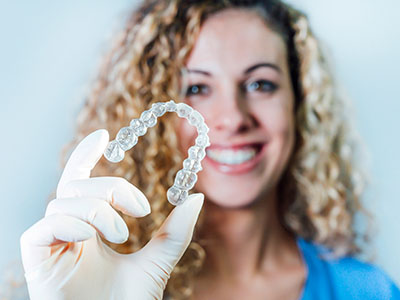
Before & After Photos
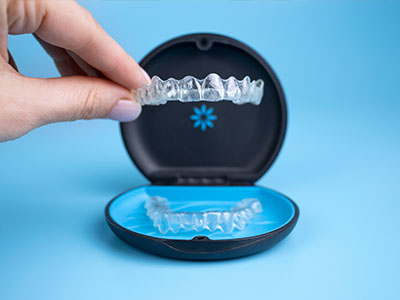
Invisalign® Videos
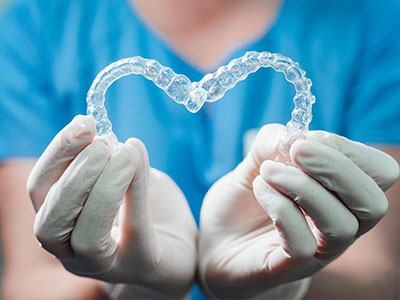
FAQs
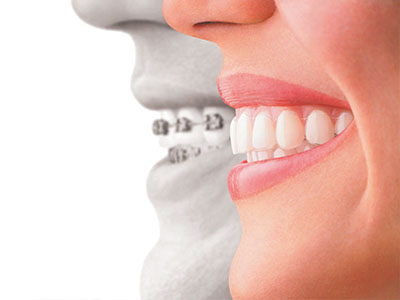
Invisalign® vs Braces
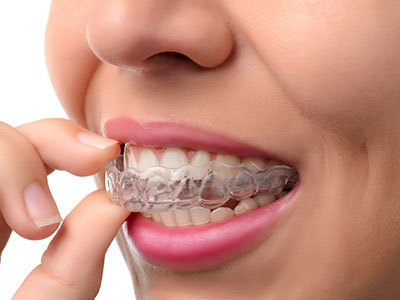
Invisalign® vs Direct-To-Consumer Aligners
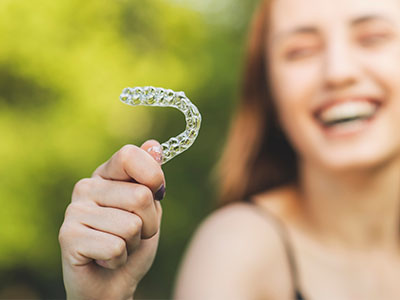
Is Invisalign® Right For Me?

Invisalign® Costs
Invisalign® treatment begins with a precise digital record of your mouth. Using intraoral scanning and 3-D imaging, the entire series of tooth movements is mapped before a single aligner is made. This digital plan allows clinicians to visualize the projected stages of alignment and to make adjustments in advance, so the course of treatment is intentional rather than improvised.
Each set of aligners is fabricated to apply gentle, controlled forces that shift teeth a little at a time. Patients wear a sequence of custom trays, swapping to the next set according to the schedule recommended by the treating doctor. These incremental changes add up to the final alignment goal while keeping tooth movement measured and controlled.
Because planning happens in the virtual environment, the clinician has more control over timing and the types of movement applied. This digital-first approach also makes it easier to discuss realistic expectations at the outset and to coordinate care when additional interventions — such as attachments or elastics — are needed to achieve specific movements.
With the aligners themselves crafted from nearly transparent plastic, many patients appreciate that treatment is subtle in appearance. At the same time, aligners are removable, which preserves normal brushing and flossing habits and makes it simpler to maintain oral hygiene throughout treatment.

The first appointment focuses on assessment: a clinical exam, a discussion of your goals, and a digital scan of your teeth. Scanning replaces the traditional impression tray for most patients, creating a high-resolution 3-D model that forms the foundation of your individualized plan. That model helps the clinician identify the sequence of movements needed to correct alignment and bite issues.
During this visit, your treating doctor will explain how the aligner system addresses the specific characteristics of your bite and point out areas that may require additional attention. This is also an opportunity to review lifestyle considerations, such as how often you'll wear your aligners and how follow-up appointments will be scheduled.
Documentation collected at the first visit — photographs, scans, and clinical notes — also serves as a baseline for tracking progress. Clear communication at this stage helps ensure treatment aligns with your expectations and makes the path forward transparent from the outset.
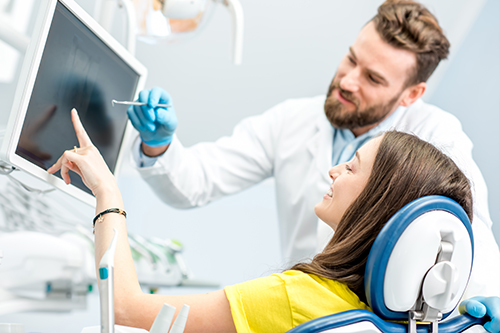
After planning, each aligner is manufactured to precise specifications that correspond to a stage in your treatment. The plastic trays are engineered to fit snugly and to gently nudge individual teeth into their next positions. For certain movements, small, tooth-colored attachments may be placed to increase the effectiveness of the aligner in guiding specific teeth.
Aligners are designed to be comfortable and to minimize irritation. Many patients report an easier adaptation period compared with metal brackets and wires, particularly when transitioning between aligners. Throughout the process, periodic check-ins allow the clinician to confirm progress and make refinements when necessary.
The controlled, staged approach makes it possible to address a range of alignment concerns while maintaining a predictable timeline for clinical review and mid-course corrections as indicated by the treating doctor.
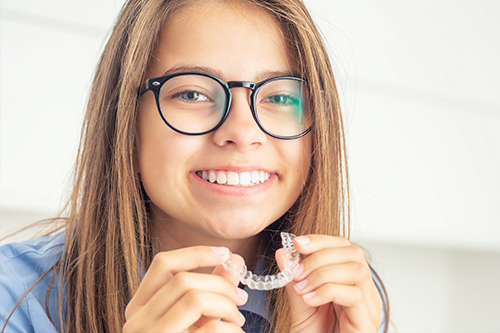
One of the practical advantages of removable aligners is that they allow patients to continue normal oral hygiene routines without obstruction. Brushing and flossing between meals remain unchanged, and aligners themselves can be cleaned with gentle brushing and rinsing. This helps maintain gum health and reduces the risk of decay during treatment.
Aligners should be worn according to the clinician’s guidance — typically most waking hours each day — to achieve the planned movements. Short removals for eating, drinking anything other than water, and oral care are expected, so planning for storage and cleaning on the go is useful for an active lifestyle.
Speech adaptation is usually brief; many people notice negligible changes after an initial adjustment period. For those with specific occupational or social concerns, the discrete appearance of clear aligners often makes them an appealing alternative to visible orthodontic appliances.

Invisalign® is effective for a wide spectrum of alignment issues including spacing, crowding, and many common bite discrepancies. Complex cases may require careful planning and adjunctive measures to achieve the desired outcomes. Your clinician can outline whether clear aligners alone are appropriate or if additional steps will enhance predictability.
Regular appointments allow the doctor to gauge how closely the treatment follows the planned movements. If refinements are needed, supplemental aligners or modifications in the plan can be implemented. Ongoing monitoring helps maintain momentum and ensures the treatment remains on course.
After active movement is complete, retention is an important phase. Retainers — often clear and removable or fixed options — support the new position of the teeth and help preserve the alignment achieved during treatment. Your clinician will advise on a retention schedule tailored to your needs.
Explore a selection of short videos that explain the process, materials, and clinical considerations associated with clear-aligner therapy.
*Invisalign® is a registered trademark of Align Technology, Inc.
At Silk Dental Delray Beach (formerly Marc Bilodeau DMD), we approach clear-aligner therapy with a focus on precision, patient comfort, and predictable clinical planning. If you're considering Invisalign® and would like to learn more about how it might fit your needs, contact us for additional information and to arrange a consultation.
There are many options for patients who want to avoid metal braces! The most popular alternative orthodontic treatment is Invisalign®, which are clear plastic aligners designed to straighten teeth. After an examination of your teeth, your dentist will determine which option is best suited to your wants and needs.
According to the Invisalign® website, the cost for treatment is approximately the same as the cost for metal braces. A portion of this cost may be covered by your insurance. Please call us to set up a consultation and discuss potential payment plan options.
The first step is to schedule a consultation with your doctor, so they can devise a treatment plan that is best suited to your individual dental needs. Once approved, you will receive your first set of aligners. Your doctor will then regularly monitor the movement of your teeth and new aligners will be ordered according to the progress made in your treatment plan.
Invisalign® aligners are made of clear, flexible plastic. The company received a patent for this material – SmartTrack® – to be used exclusively for Invisalign treatment purposes. These aligners are FDA approved and nearly invisible!
Your doctor will give you an estimate regarding how long your Invisalign® treatment should take, which will depend on your specific needs. The average length of time for treatment is approximately 12-18 months. However, some patients may see results far sooner. Remember to wear your aligners exactly as instructed by your doctor to obtain the best results.
Your doctor will most likely recommend that you wear retainers following your Invisalign® treatment. This is a precaution that will prevent your teeth from shifting back to their original positioning. It is important to follow your doctor's instructions exactly to ensure long-lasting results.
You must wear your aligners for up to 22 hours daily. You may remove them for eating, drinking and regular oral hygiene.
No. Unlike braces, you may eat whatever you like as long as you remove the aligners before eating. Prior to placing the aligners back on, it is important to brush your teeth and the aligners after you eat.
Like any orthodontic treatment, there is a short adjustment period. The more you speak with the aligners on, the quicker you will adjust.
There will be some pressure and minor discomfort for a day or two after each initial insertion. This is a sign that your teeth are moving sequentially into their final position.
It is recommended that you remove your aligners prior to chewing gum as the gum will stick to the aligners.
We discourage smoking with aligners as the cigarette smoke will tend to discolor them.
Brushing them with toothpaste will keep them fresh and clean.
Regular office visits are every five to six weeks. This will ensure that your Invisalign treatment is progressing as planned.
All orthodontic patients are instructed to wear their retainers at night indefinitely. Sleeping with your retainers in at night will ensure a healthy bite and maintain the new position of your teeth.
Yes, if their teeth, including second molars, have grown in completely.
Quick Links